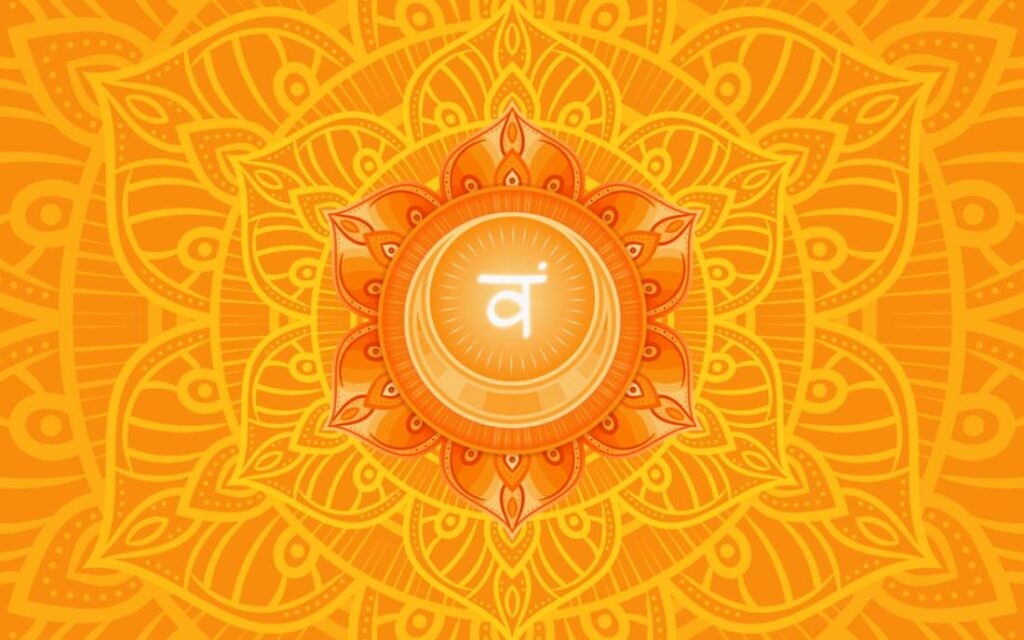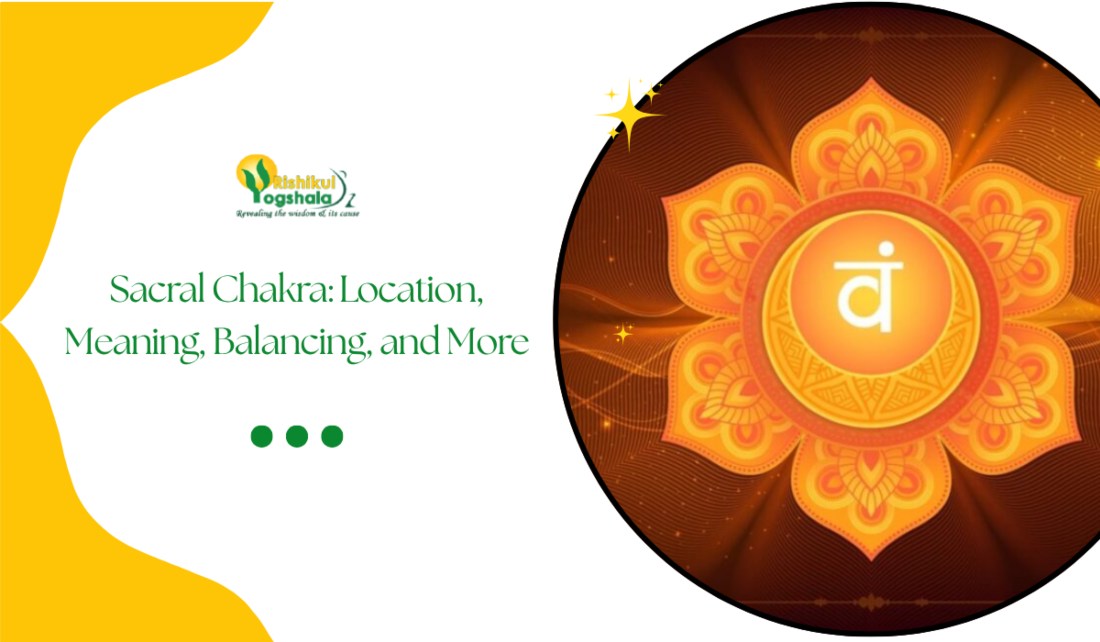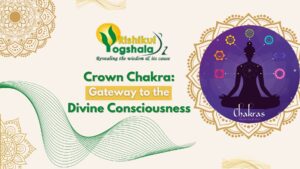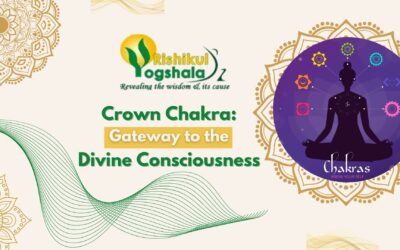The word ‘chakra’ is a Sanskrit term, meaning ‘wheel,’ which helps regulate bodily processes such as organ function, the immune system, and emotion. Chakras aren’t limited to ancient concepts—they are the energy centres connected with nerve bundles and major organs. When the chakras are balanced correctly, then energy will flow within your body, giving you clarity, calmness, and peace in your life.
However, there are many chakras throughout our body, but we typically focus on the seven root chakras, each of which has its unique meaning.
The seven root chakras in our body:
- The root chakra or muladhara
- The sacral chakra or swadisthana
- Solar plexus chakra or manipura
- Heart chakra or anahata
- Throat chakra or vishuudha
- Third eye chakra or ajna
- Crown chakra or sahasara
The chakra acts as an energy centre in the body, which helps to influence our overall physical and emotional well-being.

What is the sacral chakra?
The sacral chakra, derived from the Sanskrit word ‘’swadisthana’’ is the emotional and creative engine of your energy system. It is believed to be located in your lower abdomen, which governs your feelings, desires, and pleasure. Swadisthana chakra is the second energy channel in our body, representing the water element and symbolising the flow, fluidity and emotions.
The colour of this chakra is known to be orange, a colour associated with warmth and vitality. This vibrant colour is known to raise our consciousness, just like the sunrise.
Sacral chakra symbol and its meaning
The Swadisthana chakra has a unique symbol, which includes a six-petaled lotus, a circle with a half-moon inside, and a colour with a vibrant hue, orange. Below is the breakdown of these key elements–
- The six-petaled lotus symbolises the six negative emotions to be overcome: anger, jealousy, hatred, pride, desire, and cruelty.
- The water element symbolises our intuition, which is known as the crescent moon.
- Our continuous cycle, which spans from birth to death, symbolises the outer layer of the circle in the sacral chakra.
- The Orange colour represents warmth, sensuality, and movement.
Sarcal chakra is a symbol known for its visual meditation on emotional sensuality and as a source of creative spark.

Animal symbols for the sacral chakra {crocodile}
In philosophy, animal symbols aren’t random—they are believed to fill the gap between instinct and energy, helping us understand the chakra nature in a more earthly form. The animal symbol represents creative power and a mystery of our inner waters.
Here’s why the animal symbol is essential –
1- The sacral chakra is denoted by the water element, which symbolises fluid and adaptable, just like the aquatic animals.
2- The crocodile, which is the main symbol for the sacral chakra, as the crocodile is the water element, symbolises hidden dangers, laziness, and can symbolise an imbalanced chakra.
What does the sacral chakra do for you?
The sacral chakra, or swadisthana chakra, when activated correctly, can transform your emotional dullness, giving you joy and a deep connection from within yourself. It also teaches us to feel fully, without any fear. There are many benefits of activating the Swadisthana chakra. Below are some of the points –
- It unlocks your creative energy.
- Helps in restoring sensuality and pleasure
- Deepens intimacy and connection
- Helps in awakening emotional intelligence
- Helps in sparkling passion and zest for life

Signs of an overactive sacral chakra
When pleasure spills into obsession, and feeling echoes louder than reason, then it might be a sign that your sacral chakra is overactive. When the Swadisthana chakra is balanced correctly, it allows you to feel deeply and express yourself with ease. However, an overstimulated chakra can push these qualities to extremes. Below are the signs of an overstimulated sacral chakra:–
- Difficult in regulating emotions or calming down when upset.
- Feeling of emptiness even after pleasurable experiences, as pleasure becomes a distraction rather than nourishment.
- Lower back discomfort
- Reproductive or urinary issues
- Insomnia or fatigue
An overstimulated chakra is not a defect– it’s a sign that you need to balance the sacral chakra.
How to balance the sacral chakra?
Balancing the sacral chakra, or the Swadhisthana chakra, requires nurturing emotions, creativity, and sensual expression with fulfilment. When balanced, you can feel inspired and connected with yourself and others.
Below is a detailed guide on how to balance your Swadisthana chakra.
- Join in some creative expression – The key element of this chakra is water, which symbolises creativity and freedom. Like [ cooking creatively, journaling, singing, or sculpting
- Do yoga asanas that open your lower abdomen. The sacral chakra, located in the pelvic region, opens your lower abdomen and releases emotions that have been stored. Recommended poses– butterfly pose, happy child pose, frog pose, pigeon pose.
- Try meditating and visualising an orange light. Now, visualise an orange light radiating within your pelvic region and breathe gently into it, without any pressure.
- Use affirmations while meditating – incorporating affirmations into your meditation practice is another effective way to activate the sacral chakra.
- Eat nourishing foods – foods that are vibrant in colour and water-rich, such as oranges, apricots, pumpkins, sweet potatoes, and carrots- to help activate the sacral chakra. Water-rich foods, such as cucumbers, coconut water, zucchini, and tomatoes, as well as herbal teas like ginger, cinnamon, and fennel.
- Use crystals – crystals are known to activate the sacral chakra due to their unique energetic properties. These crystals can be used while meditating in a quiet and peaceful place. The crystals can be worn in jewellery or on any part of the body. Some of the effective crystals include orange calcite, moonstone, and carnelian.
- Cultivating joy and pleasure without having any guilt, allowing yourself to experience fully the small joys in life, the sacral chakra is activated when you permit yourself to feel good.

What happens when the sacral chakra opens?
It’s like turning on the tap to your river of emotions, giving you pleasure and creativity when the sacral chakra is correctly opened and balanced. You will experience that you no longer feel stuck – you will flow.
1- Helps in becoming emotionally fluent, like being able to feel and express yourself
2- Awakening in your creative power
3- Improve in a healthy relationship
4 – Happiness blooms from within
5- Increase in your confidence
Mantra for activating the sacral chakra
‘’Vam’’ is the bija or seed mantra for activating the sacral chakra; it is a single syllable which carries a vibrational sound. Vibration produced during breathing has the power to stimulate the pelvic region, if done correctly. Here is how to practice this sound-
- Find a quiet place
- Then, place your hands below your abdominal area
- Close your eyes, inhale deeply, and exhale with the sound of vammm… let this sound vibrate through your lower belly.
- Repeat this for at least 5-10 minutes.
Conclusion
To balance emotional harmony, creativity and a healthy relationship, the sacral chakra plays a significant role in our life. When this chakra is blocked or unbalanced, it can create emotional instability, a lack of passion, or a problem in building new relationships. That’s where we need to balance this chakra, to experience fullness without any guilt or fear. Performing activities like mindful breathing, yoga mudras, and poses helps in balancing the swadhisthana chakra.

Our Popular Yoga Teacher Training Course:
Book 200 Hour Yoga Teacher Training Course Today! : https://www.rishikulyogshalarishikesh.com/200-hour-yoga-teacher-training-rishikesh.php
Frequently asked questions
Q1– Where is the sacral chakra located?
The sacral chakra is located near the lower abdomen.
Q2- What is the sacral chakra?
The sacral chakra is one of the seven chakras in the body’s system.
Q3- What are the signs of an imbalanced sacral chakra?
Signs of an imbalance in the sacral chakra include emotional instability, a lack of passion, and difficulties in forming relationships.















